As the culinary landscape continues to evolve, contact grills have emerged as a popular choice for both home chefs and professional kitchens alike. Their compact design and ability to sear food with precision have made them a staple in many kitchens across the Western markets. Today, we delve into the factors shaping the demand for tailored contact grills, exploring how market dynamics, consumer preferences, and technological advancements are driving this niche within the grill industry.
Introduction to Contact Grills in the Western Markets
Contact grills have become a staple in the Western kitchen, offering a convenient and efficient way to cook a variety of foods. These compact appliances, often resembling a large, flat grill, have seen a surge in popularity across Europe and the United States. With their sleek designs and versatile cooking capabilities, contact grills have become a favorite among home chefs and culinary enthusiasts alike.
The technology behind contact grills is quite fascinating. These appliances typically consist of two heating plates that press against the food, sealing it in place and ensuring even cooking. This process not only locks in the flavors but also reduces the need for additional fats or oils, making for a healthier cooking option. The even distribution of heat is a game-changer for those who prefer perfectly cooked steaks, burgers, or even vegetables.
In Europe, the contact grill market has been growing steadily, driven by an increasing interest in outdoor cooking and a demand for high-quality kitchen appliances. The German market, in particular, has seen a significant rise in the sales of contact grills, with consumers gravitating towards brands that offer innovative features and superior performance.
The U.S. market, on the other hand, has been somewhat slower to embrace contact grills, but there’s a noticeable shift in consumer preferences. Younger demographics, especially those who are health-conscious and value convenience, are leading the charge. They’re drawn to the idea of a quick, healthy meal that doesn’t require much prep work or cleanup.
One of the key factors contributing to the rise of contact grills in the Western markets is the demand for tailored cooking experiences. Consumers are no longer satisfied with one-size-fits-all appliances; they want devices that cater to their specific needs and preferences. This is where the concept of a “tailored contact grill” comes into play.
Tailoring a contact grill can mean a few different things. For starters, it could involve the ability to adjust the temperature settings to suit different types of food and cooking styles. Some models offer precise temperature control, allowing users to sear steaks at high heat or gently cook delicate fish fillets.
Another aspect of tailoring is the design of the grill plates themselves. Some contact grills come with non-stick surfaces that are easy to clean, while others feature grooves or ridges that create a distinctive grill pattern on the food. There are even models with removable plates for easy cleaning and replacement.
In the European market, the emphasis on tailoring extends beyond just the physical design of the grill. Brands are also focusing on the user experience, offering intuitive interfaces that make it simple to adjust settings and monitor the cooking process. Some grills even come with built-in timers or alarms to ensure that food is cooked to perfection every time.
When it comes to the U.S. market, the tailoring trend is a bit different. Consumers are looking for contact grills that not only offer customization in terms of cooking functions but also in terms of aesthetics. Many brands are now offering a range of colors and finishes to match kitchen decor, appealing to the growing segment of homeowners who take pride in their kitchen space.
Data from market research firms indicates that the demand for tailored contact grills is on the rise. Sales figures show a steady increase in the number of units sold, with consumers willing to pay a premium for the added features and functionality. According to a report by Grand View Research, the global contact grill market is expected to reach a value of $3.3 billion by 2025, with a compound annual growth rate (CAGR) of 5.7% from 2018 to 2025.
As the market continues to evolve, we can expect to see even more innovation in the realm of tailored contact grills. Brands are already exploring the integration of smart technology, such as Wi-Fi connectivity and smartphone apps, which allow users to control their grills remotely and even receive cooking notifications.
In conclusion, the contact grill market in the Western world is experiencing a transformation, driven by the desire for tailored cooking experiences. As consumers seek out appliances that not only meet their functional needs but also reflect their personal style, the future of contact grills looks bright, with endless possibilities for customization and innovation.
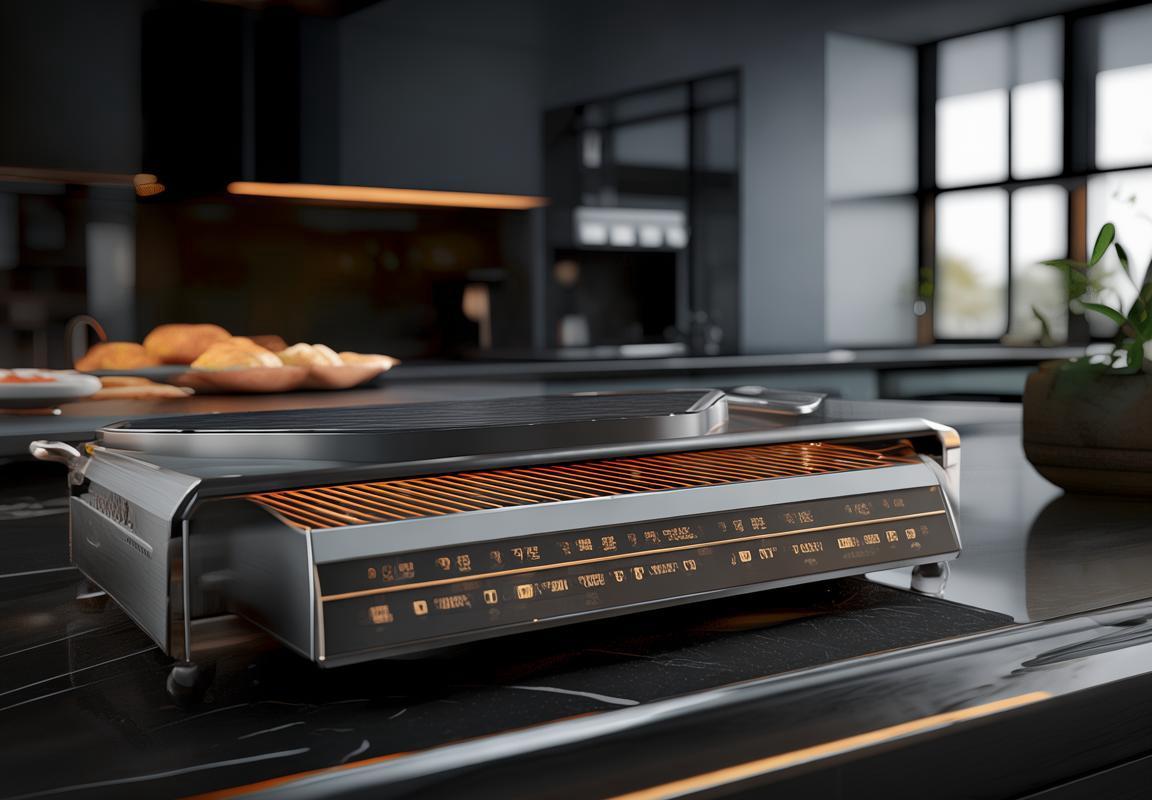
The Rising Popularity of Contact Grills in Europe and the U.S
Contact grills, once a niche product in the culinary world, have seen a remarkable surge in popularity across Europe and the United States. This upward trend can be attributed to several factors, including evolving dietary preferences, the convenience of home cooking, and the innovation in grilling technology.
The shift towards healthier eating habits has played a significant role in the growing interest in contact grills. These appliances offer a healthier alternative to traditional grilling methods, as they prevent the food from direct contact with the flames or hot surfaces, reducing the likelihood of burning and charring. This is particularly appealing to health-conscious consumers who are looking for ways to enjoy their favorite grilled dishes without the added risks of cancer-causing compounds found in charred foods.
In Europe, the emphasis on Mediterranean cuisine has also contributed to the popularity of contact grills. The use of these grills allows for the perfect sear on meats, seafood, and vegetables, while maintaining a moist and tender interior. Chefs and home cooks alike are drawn to the ability to achieve these results without the need for an outdoor grill or a complex indoor setup.
The convenience factor cannot be overstated. Contact grills are compact, easy to clean, and require minimal preparation. For busy households or individuals who love to cook but lack the time for elaborate grilling sessions, these appliances are a game-changer. The quick cooking times and straightforward operation have made contact grills a staple in many modern kitchens.
In the U.S., the rise of the indoor grilling trend has been fueled by the desire for outdoor experiences to be replicated indoors. Contact grills offer a practical solution for those who cannot or choose not to use a traditional grill due to space constraints or weather conditions. This has led to a significant increase in the sales of contact grills, especially during the colder months when outdoor grilling is not feasible.
The convenience of contact grills is not just limited to their size and ease of use; they also provide a level of precision that is hard to achieve with other grilling methods. The even heat distribution ensures that food is cooked thoroughly without overcooking or burning. This consistency in cooking quality has made contact grills a favorite among both amateur and professional chefs.
The rise in popularity has also been supported by the marketing efforts of manufacturers. Brands have been quick to capitalize on the trend, offering a wide range of models with various features. From single-plate grills to multi-functional units that can also serve as a panini press or a sandwich maker, there’s a contact grill for every type of cook.
In recent years, there has been a noticeable trend towards personalization and customization in kitchen appliances. Contact grills are no exception. Consumers are now looking for appliances that not only meet their cooking needs but also reflect their personal style. This has led to a proliferation of models with sleek designs, advanced heating elements, and even smart technology integration.
The U.S. and European markets have seen a significant increase in the sale of contact grills with built-in temperature controls and timers, allowing users to achieve precise cooking temperatures and times. These features not only enhance the cooking experience but also cater to the growing number of consumers who are interested in cooking with a scientific approach.
Moreover, the focus on sustainability and eco-friendliness has also played a part in the popularity of contact grills. As consumers become more environmentally conscious, they are gravitating towards appliances that are energy-efficient and easy to maintain. Contact grills, with their compact size and efficient heating systems, align with these values.
The global pandemic has also had an indirect impact on the popularity of contact grills. With more people spending more time at home, there has been a surge in interest in home cooking and meal preparation. Contact grills have been a convenient choice for those looking to add variety to their home-cooked meals without the need for extensive equipment.
In conclusion, the rising popularity of contact grills in Europe and the U.S. can be attributed to a combination of health consciousness, convenience, technological advancements, and a shift towards personalized cooking experiences. As the market continues to evolve, it will be interesting to see how manufacturers adapt to meet the changing demands of consumers.
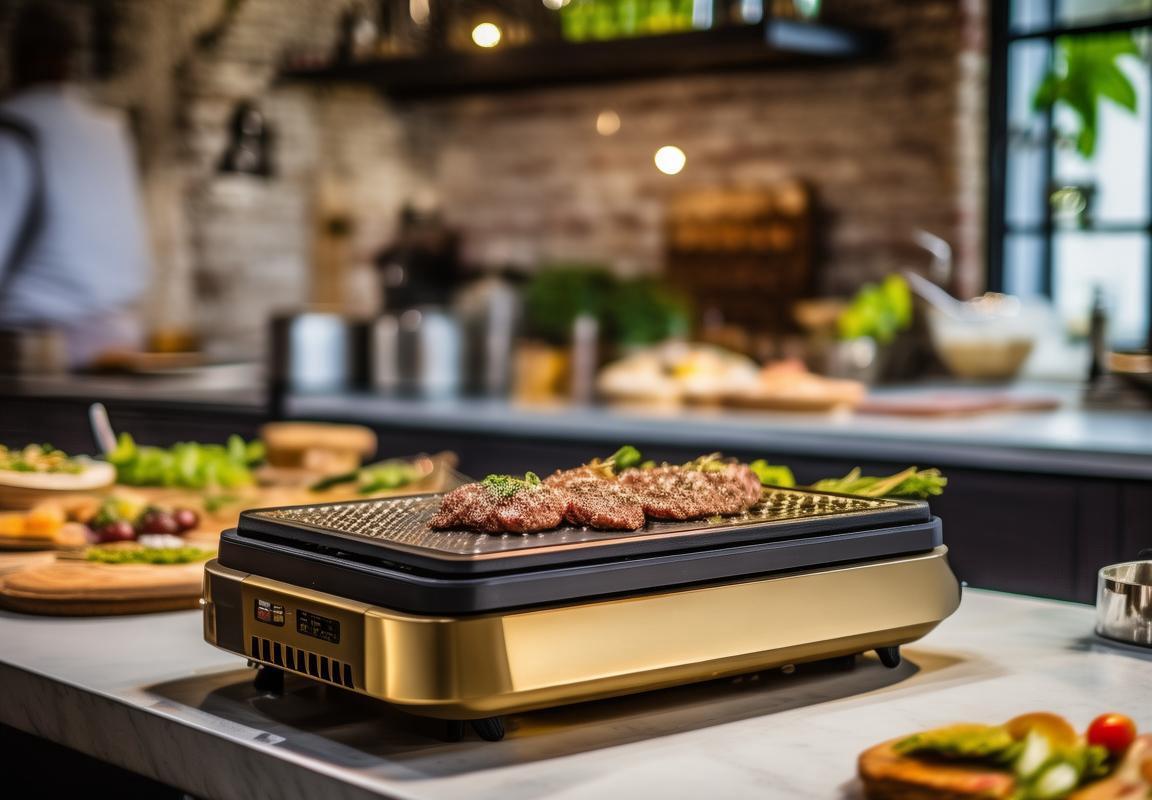
Factors Driving the Demand for Tailored Contact Grills
The surge in demand for tailored contact grills can be attributed to several key factors that have reshaped consumer preferences and market dynamics.
Culinary Diversity and Personalization TrendsOne of the primary drivers is the increasing emphasis on culinary diversity and personalization. With the globalization of food cultures, consumers are seeking a wider range of flavors and cooking techniques. Tailored contact grills offer the ability to achieve different textures and tastes, from traditional grill marks to a more seared finish, catering to a variety of culinary preferences.
Health and Wellness AwarenessThere’s a growing awareness of health and wellness, with many consumers opting for cooking methods that minimize oil usage. Contact grills, which require less fat than traditional grilling methods, have become a popular choice. The health-conscious consumer base is driving the demand for grills that offer precise temperature control and adjustable cooking surfaces to ensure the healthiest cooking experience.
Technological AdvancementsAdvancements in technology have significantly impacted the contact grill market. Modern grills now come with features like digital temperature controls, non-stick surfaces, and programmable settings that make cooking easier and more consistent. These technological improvements have made tailored contact grills more accessible and appealing to tech-savvy consumers.
Sustainability and Eco-Friendly ChoicesSustainability is a major concern for many consumers, and the kitchen is no exception. Tailored contact grills are often made with eco-friendly materials and designed for energy efficiency, which resonates with environmentally conscious shoppers. The demand for products that align with sustainability goals is on the rise, and contact grills are capitalizing on this trend.
Versatility and Easy CleanupContact grills are known for their versatility, allowing users to cook a variety of foods, from meats to vegetables and even sandwiches. This versatility is particularly appealing to busy individuals and families who seek quick and efficient meal preparation. Moreover, the ease of cleanup, often achieved through removable cooking surfaces and non-stick coatings, is a significant factor in the demand for tailored contact grills.
Influence of Celebrity Chefs and Cooking ShowsCelebrity chefs and popular cooking shows have played a role in promoting the use of contact grills. Their endorsement of specific brands and cooking techniques has influenced consumers to seek out similar products. The trend of cooking at home, fueled by these influences, has driven the demand for high-quality, tailored contact grills.
Cultural Shift Towards Outdoor LivingThe shift towards outdoor living and entertaining has also contributed to the demand for tailored contact grills. As people spend more time in their gardens and on patios, the need for portable and efficient cooking solutions has increased. Contact grills offer a convenient way to enjoy outdoor cooking without the hassle of a traditional grill setup.
Economic Factors and Value PropositionEconomic factors, such as changing consumer budgets and the search for value, have also influenced the demand for tailored contact grills. These grills often provide a cost-effective alternative to outdoor grills or oven cooking, making them an attractive option for those looking to enhance their cooking experience without breaking the bank.
In conclusion, the demand for tailored contact grills is driven by a combination of culinary trends, health consciousness, technological advancements, sustainability concerns, and the influence of popular culture. These factors have created a fertile ground for innovation and growth in the contact grill market.
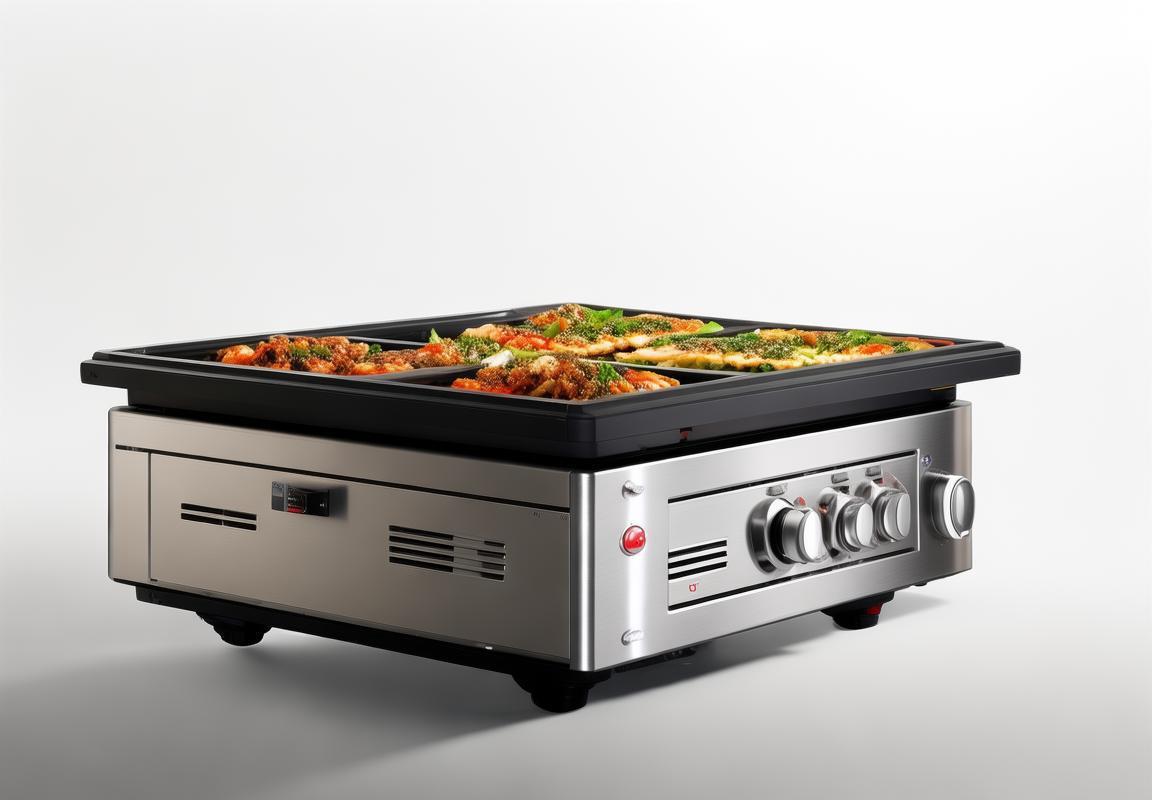
Market Dynamics: Competition and Innovation
In the competitive landscape of the kitchen appliance market, contact grills have seen a surge in demand, driven by a variety of factors. Here’s a closer look at some of the key elements propelling this growth:
-
Consumer Health AwarenessAs health and wellness trends continue to dominate the culinary world, consumers are seeking cooking methods that minimize oil usage and preserve nutritional value. Contact grills, with their ability to cook food with less fat, have become a popular choice for health-conscious buyers.
-
Convenience and SpeedThe fast-paced lifestyle of many consumers has led to a desire for cooking appliances that offer convenience and speed. Contact grills, with their ability to cook a variety of foods quickly and evenly, have found a niche among those who value time-saving features.
-
Versatility in Cooking TechniquesModern contact grills are not just for burgers and hot dogs. They offer a range of cooking surfaces and settings that mimic grilling, searing, and even sandwich pressing. This versatility has attracted a wide audience looking for a single appliance to handle multiple cooking tasks.
-
Technology IntegrationThe integration of smart technology into contact grills has been a game-changer. Features like digital temperature control, Bluetooth connectivity for monitoring cooking progress on a smartphone, and even recipes that can be downloaded directly to the grill have made these appliances more appealing to tech-savvy consumers.
-
Eco-Friendly CookingAs environmental concerns grow, so does the demand for eco-friendly appliances. Contact grills often consume less energy than traditional grills and don’t require charcoal or gas, making them a more sustainable option for environmentally conscious consumers.
-
Brand DifferentiationManufacturers have been quick to innovate and differentiate their products in a crowded market. From non-stick surfaces that make clean-up a breeze to unique design features that enhance the user experience, brands are pushing the boundaries of what a contact grill can offer.
-
Marketing and Influencer EndorsementsMarketing strategies have played a significant role in driving demand. Influencer partnerships, engaging social media campaigns, and cooking demonstrations have all helped to raise awareness and interest in contact grills.
-
Retail DistributionThe availability of contact grills in various retail channels has also contributed to their popularity. From large home improvement stores to specialty kitchen appliance shops, consumers can find a wide range of options that fit their needs and budgets.
-
Seasonal TrendsSeasonal trends, such as outdoor cooking during the summer months, can boost sales for contact grills. Brands often capitalize on these trends with limited-time offers or promotional packages that include accessories like grill mats or spatulas.
-
Economic FactorsEconomic conditions can also influence the demand for contact grills. In times of economic downturn, consumers may be more inclined to purchase affordable, multi-functional appliances like contact grills, which offer value and versatility.
-
Cross-merchandising OpportunitiesCross-merchandising, where contact grills are displayed alongside related products like outdoor furniture or grilling accessories, can increase visibility and sales. This strategy encourages impulse purchases and complements the overall kitchen experience.
-
Culinary ExperimentationThe ability to experiment with different cooking techniques and recipes has piqued the interest of culinary enthusiasts. Contact grills provide a platform for innovation, allowing users to explore various flavors and textures without the need for a traditional grill setup.
-
Customer Reviews and Word of MouthPositive reviews and word of mouth from satisfied customers can significantly impact the demand for contact grills. As more people share their success stories, the appliance gains credibility and attracts new users.
-
After-Sales Service and WarrantiesOffering reliable after-sales service and comprehensive warranties can build trust and loyalty among consumers. Knowing that a product is backed by quality assurance can encourage potential buyers to choose a particular brand over others.
-
Globalization of FlavorsThe globalization of food culture has introduced consumers to a wide array of international cuisines, many of which can be replicated on a contact grill. From Argentine chimichurri to Japanese yakitori, the versatility of these appliances has made them a staple in diverse households.
-
Price SensitivityIn a market where price is often a deciding factor, contact grills that offer premium features at competitive prices have a better chance of capturing consumer interest. The balance between affordability and functionality is key to sustained demand.
-
Culinary Education and DemonstrationCooking classes and live demonstrations that showcase the capabilities of contact grills can significantly influence consumer purchasing decisions. By educating the public on the appliance’s uses and benefits, manufacturers can create a more informed consumer base.
-
The Impact of Social MediaSocial media platforms have become a powerful tool for promoting contact grills. High-quality images, videos, and user-generated content can create a buzz around these appliances, driving both online and in-store sales.
In summary, the demand for tailored contact grills is driven by a combination of health and convenience, technological advancements, and the need for versatile cooking solutions. As the market evolves, so too will the factors that influence consumer choice and drive demand for these versatile kitchen appliances.
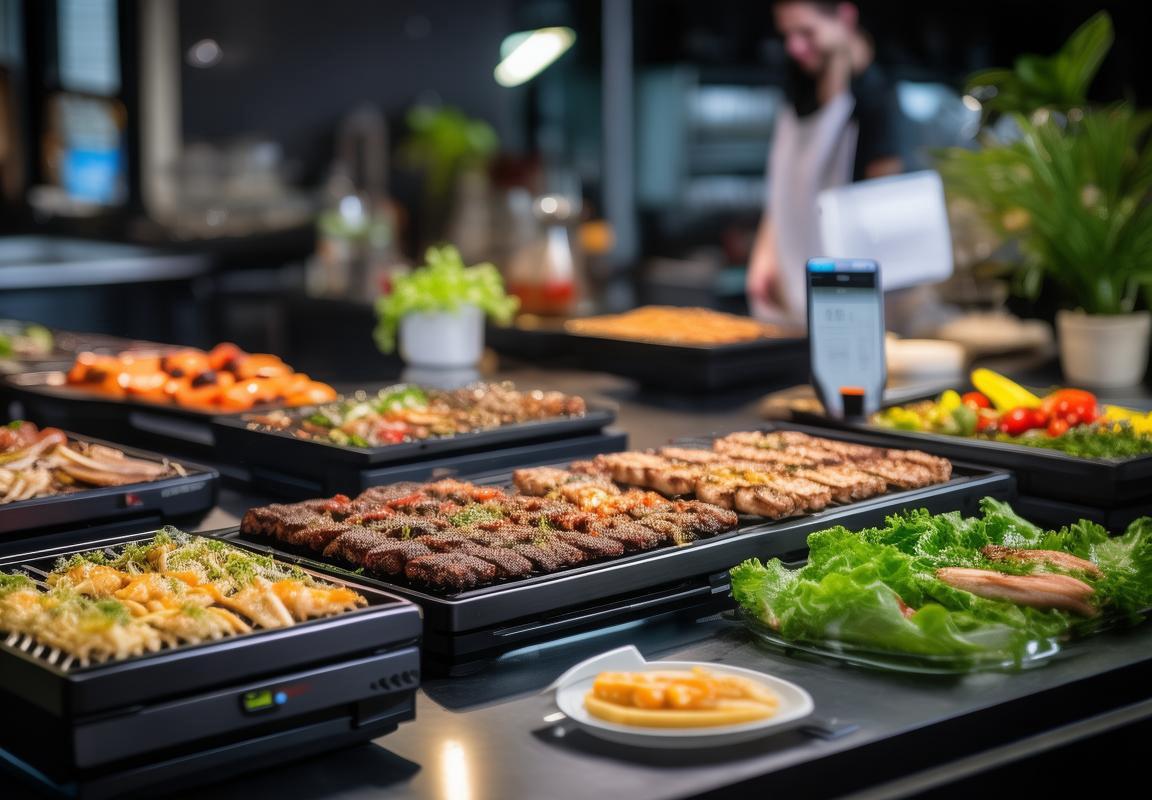
Consumer Preferences and Tailoring Features
The consumer landscape in the contact grill market is shaped by a variety of factors, each influencing the demand for tailored features that cater to individual preferences. Here’s an exploration of these preferences and how they drive the design of contact grills.
Grill Size and CapacityConsumers vary greatly in their cooking needs, from small families to large gatherings. The demand for contact grills with adjustable sizes and capacities has surged, allowing users to choose a unit that fits their specific space and number of guests. Compact models for solo chefs and larger, multi-sectioned grills for social events are popular, reflecting a diverse range of consumer preferences.
Temperature Control and ConsistencyThe ability to control the temperature is a crucial feature for many grill enthusiasts. Tailored contact grills often come with precise temperature settings and digital controls, ensuring consistent cooking results. Consumers seek grills that can handle everything from delicate fish fillets to hearty steaks, and the ability to adjust heat levels to perfection is a major selling point.
Non-Stick SurfacesEase of cleaning is a significant concern for most consumers. Grills with non-stick surfaces have become increasingly popular, as they reduce the need for excessive oil and make cleaning a breeze. The convenience of a quick wipe-down after cooking is a feature that many home cooks look for, and it’s one that tailored contact grills are increasingly offering.
Versatility in Cooking MethodsToday’s contact grills are not just for searing; they’re multi-functional cooking devices. Consumers are drawn to models that can perform various cooking techniques such as grilling, pan-frying, and even making sandwiches. The ability to switch between these methods with the same appliance is a significant advantage, as it adds versatility to the kitchen without requiring multiple gadgets.
Design and AestheticsThe aesthetic appeal of a contact grill can’t be overlooked. Consumers are choosing grills not only for their functionality but also for their design. Sleek, modern aesthetics, and a variety of color options are becoming more important. Tailored grills that offer a stylish appearance alongside their practical features are more likely to appeal to the consumer market.
Ease of UseA common thread among consumer preferences is the desire for ease of use. Grills with intuitive interfaces, simple assembly, and easy-to-read displays are preferred. Consumers are looking for appliances that minimize the learning curve and allow them to focus on the cooking experience rather than the technical aspects of the grill.
Safety FeaturesSafety is a top priority for many consumers. Tailored contact grills with safety features such as cool-to-the-touch handles, automatic shut-off functions, and child locks are becoming standard. These features not only protect the user but also give peace of mind, especially for those with young children or those who may be less experienced in kitchen safety.
Customizable SettingsThe ability to customize settings is another key factor. Grills that allow users to save their preferred cooking temperatures and settings are favored. This feature caters to those who have specific recipes they want to replicate or who prefer a consistent cooking experience every time they use the grill.
Portability and StorageFor some consumers, portability is a crucial consideration. Grills that are easy to move and store, perhaps with foldable legs or a carrying handle, are in high demand. This preference is particularly strong among those who enjoy outdoor cooking or have limited kitchen space.
Brand Reputation and WarrantyLastly, the reputation of the brand and the warranty offered can greatly influence consumer choice. Consumers are more likely to invest in a tailored contact grill from a brand they trust, knowing that they will receive quality craftsmanship and customer support if issues arise.
The combination of these tailored features addresses the diverse needs and preferences of consumers, making the contact grill market a dynamic and evolving space where innovation is key to staying competitive.
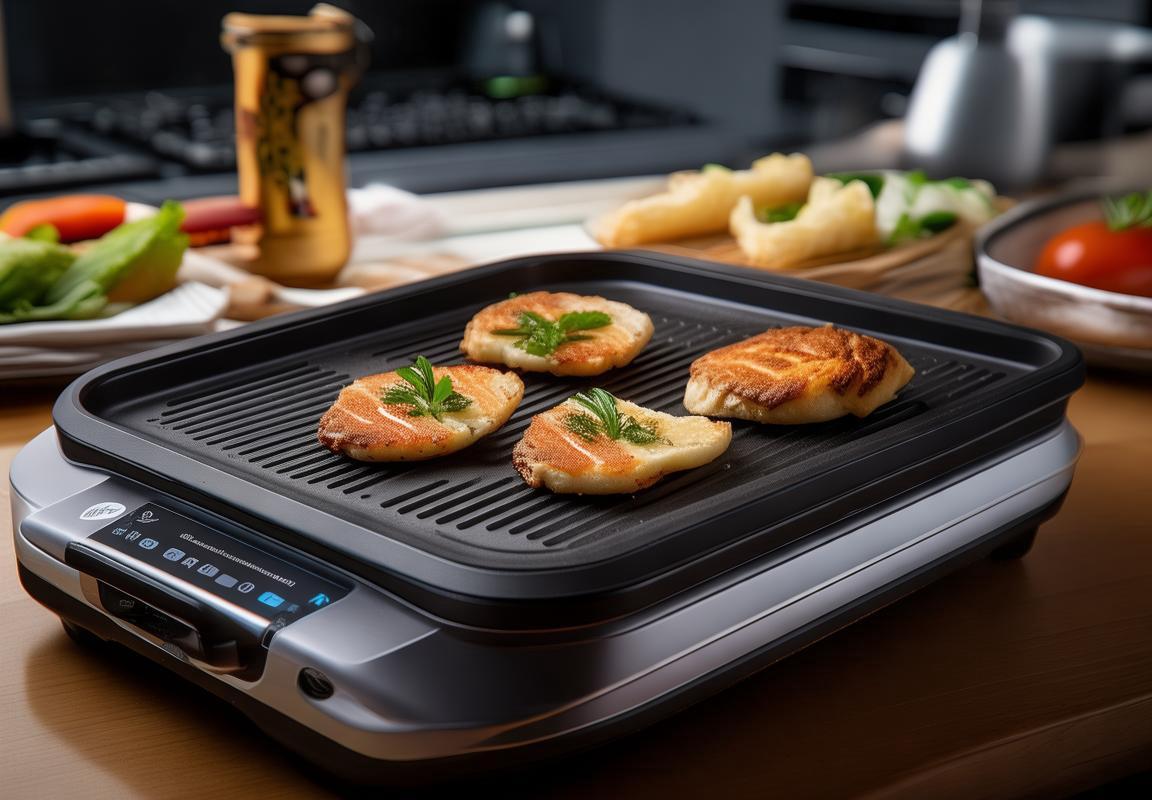
Data-Driven Insights into Contact Grill Sales
The contact grill market has seen a surge in sales, and data-driven insights are shedding light on the factors that are propelling this growth. From consumer behavior to technological advancements, here’s a closer look at what the numbers are revealing about contact grill sales.
Sales Growth TrendsYear-over-year, contact grill sales have shown a steady increase. The data reflects a growing preference for these compact, versatile cooking appliances among consumers looking for efficient and easy-to-use cooking solutions. The rise in sales can be attributed to a variety of factors, including changing dietary habits and the desire for healthier cooking methods.
Consumer Behavior ShiftsConsumer insights reveal a shift towards healthier eating habits, with a particular focus on low-fat and low-carb diets. Contact grills offer a way to cook food with minimal oil, making them an appealing choice for health-conscious consumers. The data indicates that these consumers are driving the demand for contact grills with adjustable heat settings and non-stick surfaces that reduce the need for additional fats.
Geographical Sales VariationsSales data also highlight geographical variations in contact grill popularity. In Europe, the UK and Germany have shown significant growth in contact grill sales, likely due to the popularity of outdoor cooking and the demand for convenient indoor alternatives. The U.S. market, on the other hand, has seen a surge in sales driven by the convenience of contact grills for single-serve meals and quick cooking solutions.
Brand Loyalty and Market ShareThe data shows that certain brands have established a strong presence in the contact grill market. Brands that offer a range of tailored features, such as different grill patterns and temperature controls, have seen higher retention rates among consumers. The market share of these brands is often a testament to their commitment to innovation and meeting consumer needs.
Seasonal Sales FluctuationsContact grill sales tend to fluctuate with the seasons. The peak sales periods typically align with warmer months when outdoor cooking is more prevalent. However, data indicates that indoor sales remain strong throughout the year, suggesting that consumers are increasingly using contact grills for year-round cooking. This trend is likely influenced by the appliance’s versatility and its ability to provide consistent cooking results regardless of weather conditions.
Online Sales vs. Brick-and-MortarThe data also reveals a significant shift towards online sales of contact grills. E-commerce platforms have become a primary channel for consumers to purchase these appliances, offering a wider variety of models and competitive pricing. The convenience of online shopping and the ease of comparing features and reviews have contributed to the rise in online contact grill sales.
Influence of Social Media and ReviewsSocial media has played a pivotal role in shaping consumer preferences and sales trends. The data shows that positive reviews and social media buzz can significantly impact sales. Consumers are more likely to purchase a contact grill if it has been recommended by peers or influencers, indicating the power of social proof in driving sales.
In conclusion, the data-driven insights into contact grill sales paint a picture of a market that is dynamic and responsive to consumer needs. The rise in sales is fueled by a combination of health-conscious consumer behavior, technological innovation, and the convenience offered by contact grills. As the market continues to evolve, it will be interesting to see how these insights guide future product development and marketing strategies.
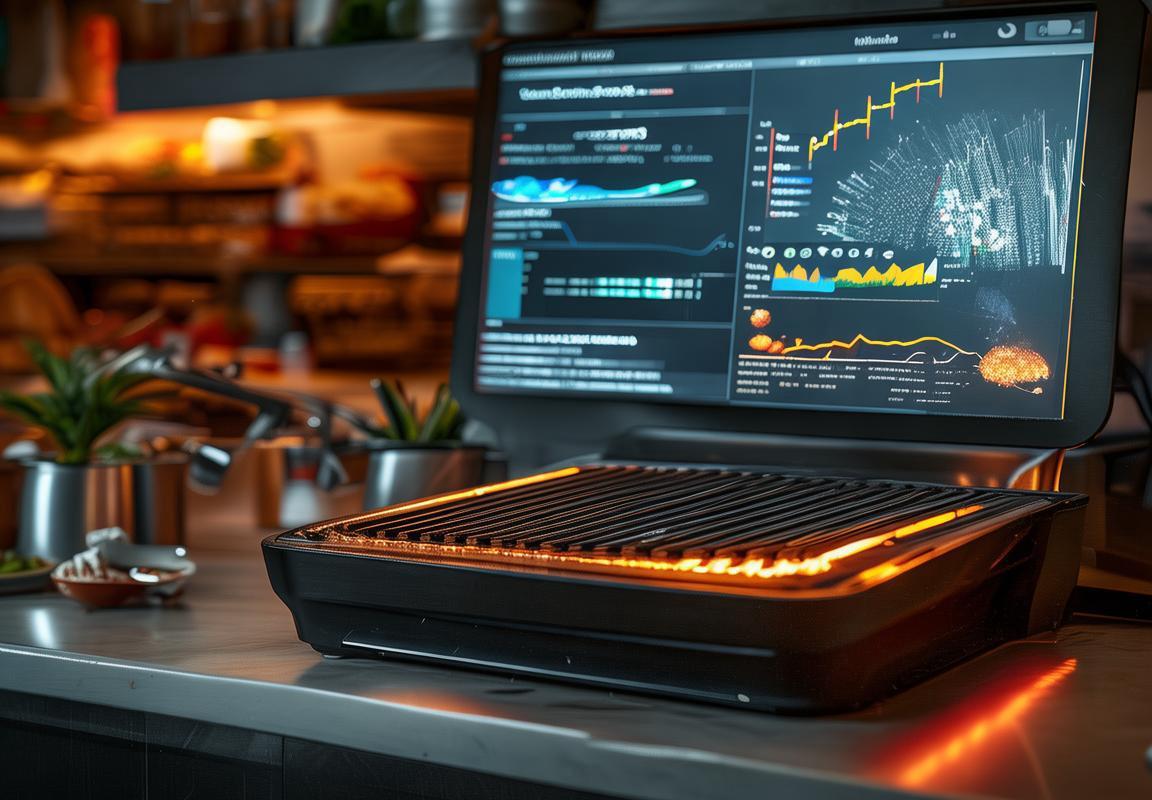
The Role of Smart Technology in Contact Grill Design
The integration of smart technology into contact grill design has revolutionized the way consumers approach outdoor cooking. From intuitive interfaces to precise temperature control, these advancements have not only enhanced the cooking experience but also catered to the evolving demands of the modern consumer.
Smart grills often come equipped with digital displays that allow users to monitor and adjust the cooking temperature with ease. This feature is particularly appealing to those who prefer a hands-off approach to grilling, as it ensures that the food is cooked to perfection without the need for constant supervision. The ability to set specific temperature ranges and timers has become a staple in the design of many contact grills, reflecting a shift towards precision cooking.
One of the standout features of smart contact grills is the inclusion of Wi-Fi connectivity. This enables users to control their grill remotely, whether they’re at home or on the go. Through a dedicated app, consumers can preheat their grill, adjust the cooking temperature, and even lock the grill to prevent accidental use. This level of convenience is a direct response to the busy lifestyles of many, who appreciate the ability to start the grilling process before arriving home.
The use of Bluetooth technology in contact grill design has also gained traction. By pairing the grill with a smartphone or tablet, users can receive real-time updates on the cooking status, including notifications when the grill is preheated or when the food is ready to be served. This integration of digital technology into the cooking process adds a layer of efficiency and connectivity that was once unimaginable.
Innovation in contact grill design has also led to the development of smart sensors. These sensors can monitor the internal temperature of the food, providing users with accurate feedback on the doneness level. This feature is especially valuable for those who are particular about the texture and flavor profile of their grilled meals. With smart sensors, users can achieve consistent results every time, making it easier to become a confident griller.
Energy efficiency is another area where smart technology has made its mark. Modern contact grills are designed to optimize energy usage, ensuring that the grill operates at peak performance while minimizing energy consumption. This is not only beneficial for the environment but also for the wallet, as users can save on electricity bills over time.
The inclusion of digital interfaces has also led to the rise of smart grills with programmable cooking settings. Users can store their favorite recipes and cooking preferences within the grill’s memory, allowing for a one-touch cooking experience. This customization feature is a testament to the industry’s focus on tailoring the grilling experience to individual tastes and preferences.
Moreover, the integration of smart technology has opened up new possibilities for grill accessories. For instance, the ability to connect a grill to a kitchen app can lead to the development of smart accessories that enhance the cooking experience further. Think of smart probes that can track the temperature of food inside and outside the grill, or smart lids that can monitor the humidity and adjust cooking times accordingly.
Lastly, the rise of smart technology in contact grill design has also sparked a wave of innovation in terms of user experience. The sleek and intuitive interfaces, combined with the advanced features, make these grills not just cooking appliances but also lifestyle enhancements. They offer a sense of control and convenience that has become a staple in the modern home, where technology and comfort go hand in hand.
In conclusion, the role of smart technology in contact grill design has been transformative. It has brought about a new era of convenience, precision, and personalization to the art of grilling, ensuring that the experience is tailored to the user’s needs and preferences. As technology continues to advance, it’s likely that we’ll see even more innovative features that further elevate the contact grill from a mere cooking tool to a smart kitchen staple.
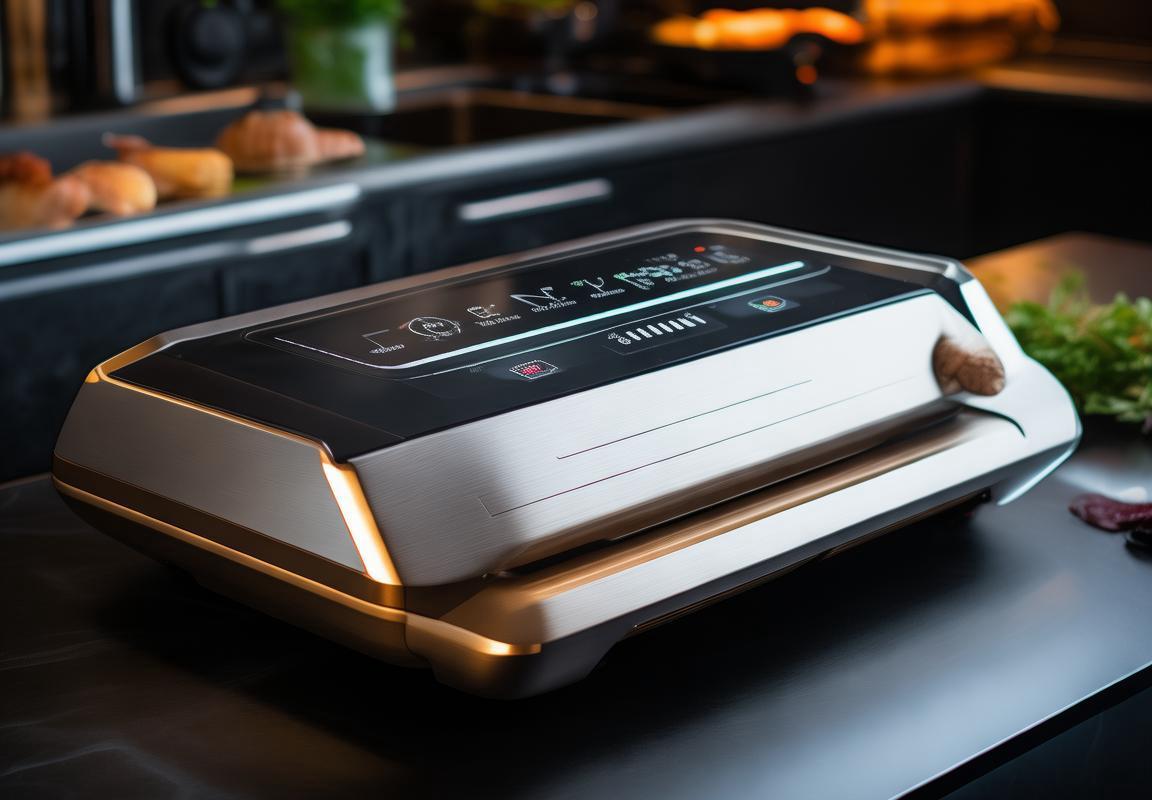
Sustainability and Eco-Friendly Trends in Contact Grill Manufacturing
In the realm of contact grill manufacturing, sustainability has emerged as a pivotal trend, reflecting a broader shift in consumer consciousness and corporate responsibility. The integration of eco-friendly practices not only appeals to environmentally conscious buyers but also often results in cost savings and improved product longevity. Here’s a delve into how sustainability and eco-friendly trends are shaping contact grill manufacturing.
Grill materials are increasingly being scrutinized for their environmental impact. Traditional metals like stainless steel, once the gold standard for durability, are being challenged by alternatives like aluminum and even recycled materials. These metals, often lighter and easier to recycle, are gaining popularity for their reduced carbon footprint during production and disposal.
Energy efficiency is another key aspect. Contact grills are now being designed with advanced heat distribution systems that optimize energy use, reducing the amount of power required to cook food evenly. Features like auto shut-off and adjustable heat settings are not just about convenience; they’re about cutting down on unnecessary energy consumption.
Recycling programs within the industry are becoming more prevalent. Many manufacturers are establishing partnerships with recycling facilities to ensure that old grills and parts are properly recycled, reducing the amount of waste that ends up in landfills. Some brands even offer incentives, such as discounts on new purchases, for customers who return their old grills for recycling.
Water conservation is also a focus, particularly in the design of grills that use water-based cooking methods. Innovations like moisture-controlled lids and non-stick surfaces reduce the need for water, making these grills more appealing to consumers looking to minimize their environmental footprint.
The packaging used for contact grills has also been under the microscope. Many companies are moving away from single-use plastics, opting for biodegradable materials or recycled cardboard. These changes not only reduce waste but also demonstrate a commitment to sustainability that resonates with eco-conscious consumers.
The trend towards smart technology in contact grill design has also brought environmental benefits. Smart grills that can be controlled remotely via smartphone apps often require less physical interaction, reducing energy use. Additionally, these devices can provide detailed analytics on usage, helping users and manufacturers alike to monitor and improve energy efficiency.
Moreover, the longevity of contact grills is being enhanced through better construction and design. By using high-quality materials and ensuring robust engineering, manufacturers are creating grills that last longer, thus reducing the frequency of replacement and the subsequent environmental impact.
In the world of contact grill manufacturing, there’s a growing emphasis on sustainability. Companies are investing in research and development to find ways to reduce their ecological impact, from sourcing materials to manufacturing processes and end-of-life disposal. As consumers become more aware of the environmental impact of their purchases, the industry is responding with a variety of eco-friendly features and practices.
From the materials used in construction to the way products are designed and disposed of, sustainability is no longer an afterthought but a core consideration in contact grill manufacturing. This shift not only aligns with global environmental goals but also offers a competitive edge in a market where consumers are increasingly seeking out eco-friendly products. As these trends continue to evolve, we can expect to see more innovative and sustainable contact grills hitting the market, each one promising to be a step towards a greener future.
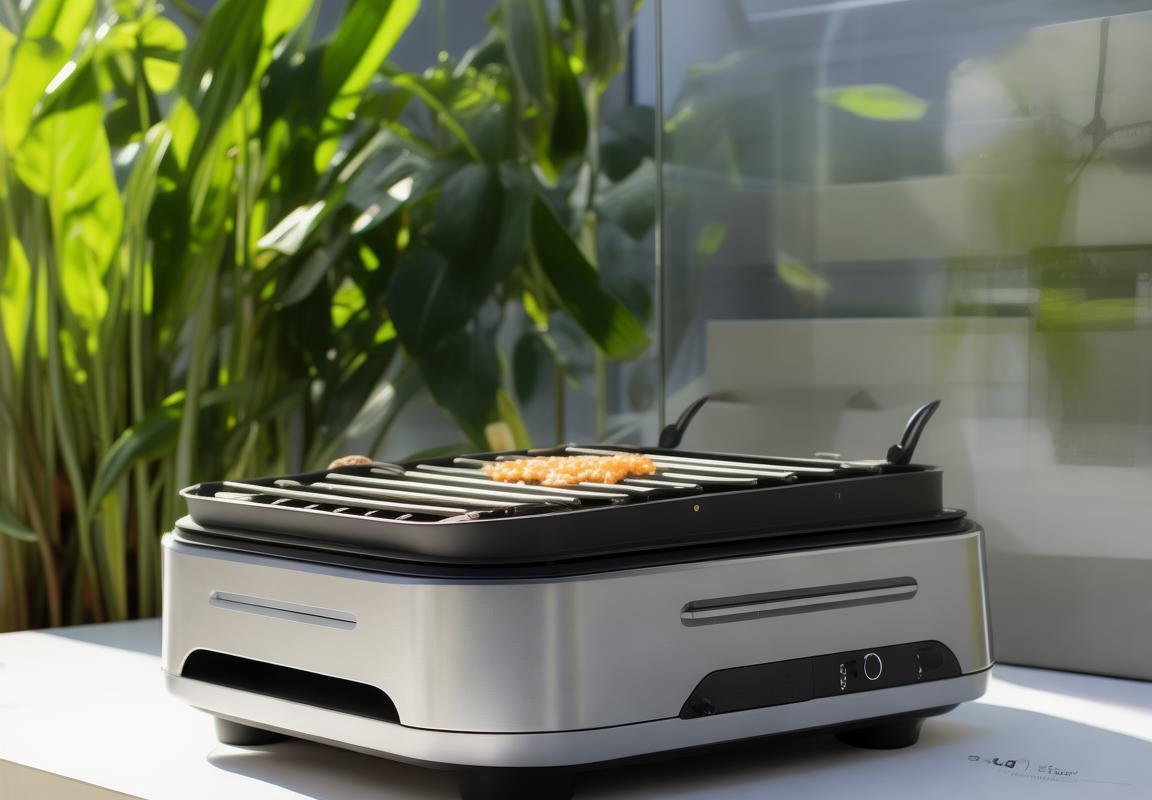
Future Predictions: Trends to Watch in the Contact Grill Industry
In the ever-evolving landscape of the contact grill industry, several trends are emerging that are poised to shape the future. From advancements in design to a growing emphasis on sustainability, here’s a glimpse into the trends that could redefine the contact grill market.
Grill Technology IntegrationThe integration of smart technology into contact grills is not just a novelty; it’s a necessity. Users are increasingly seeking appliances that not only cook food efficiently but also offer convenience and control. With features like Bluetooth connectivity, which allows grills to be controlled remotely via smartphones, the industry is responding to a consumer base that values technology and ease of use.
Health and Wellness FocusAs health consciousness grows, so does the demand for contact grills that can cater to a variety of dietary needs. From low-fat cooking options to grill pans that can accommodate gluten-free and paleo diets, manufacturers are tailoring their products to meet the diverse preferences of health-conscious consumers. This trend is likely to continue as more people seek out healthier cooking alternatives.
Eco-Friendly Materials and PracticesThe shift towards sustainability is a significant trend in contact grill manufacturing. Consumers are becoming more environmentally conscious, and this extends to the products they purchase. Eco-friendly materials like recycled stainless steel, bamboo handles, and biodegradable packaging are becoming standard in the industry. Moreover, companies are adopting greener manufacturing processes, such as reducing energy consumption and minimizing waste.
Customization and PersonalizationPersonalization has become a key factor in the appliance market, and contact grills are no exception. The ability to customize grill plates, control heat settings, and even adjust cooking times is becoming more common. This level of control not only allows for better cooking outcomes but also caters to the unique preferences of each user.
Urban and Compact DesignsAs urban living becomes more prevalent, there’s a growing need for compact, efficient appliances. Contact grills that are designed to fit smaller kitchens or to be easily transported for outdoor cooking are becoming increasingly popular. These compact grills often come with innovative features that make them as versatile as their larger counterparts.
Smart Cooking FunctionsSmart cooking functions, such as temperature sensors and built-in timers, are becoming standard in modern contact grills. These features ensure that food is cooked to perfection without the need for constant monitoring. The rise of these smart features reflects a broader trend in the kitchen appliance industry where technology is making cooking easier and more foolproof.
Globalization of IngredientsThe globalization of food trends has had a significant impact on the contact grill industry. Ingredients and cooking techniques from around the world are influencing how contact grills are used. This means that manufacturers are incorporating a wider range of cooking surfaces and features to accommodate these diverse culinary styles.
Price Sensitivity and ValueWhile premium features are becoming more common, price sensitivity remains a factor in the contact grill market. Consumers are looking for high-quality products at competitive prices. This has led to the development of more affordable contact grills that still offer the essential features without breaking the bank.
The Rise of Social Media InfluencersInfluencers and social media stars are playing a larger role in shaping consumer preferences. These individuals often showcase their favorite contact grills and cooking techniques to their followers, which can significantly impact sales. Manufacturers are taking note and are increasingly using social media as a platform to promote their products.
In conclusion, the contact grill industry is undergoing a transformation that is driven by consumer demand for technology, health, sustainability, and convenience. By staying abreast of these trends, manufacturers can continue to innovate and meet the evolving needs of the market.
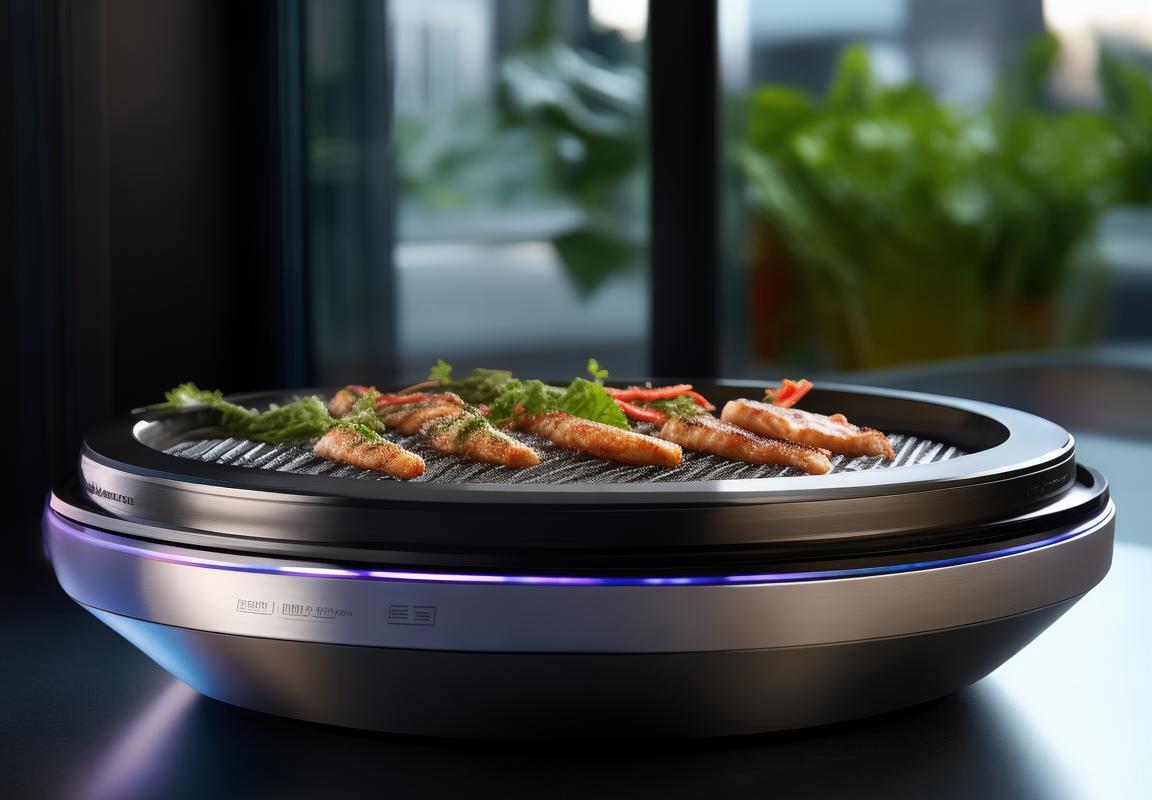
Conclusion: The Tailored Contact Grill’s Future in the Western Markets
The tailored contact grill’s future in the Western markets is poised to be shaped by a combination of evolving consumer tastes, technological advancements, and a growing emphasis on sustainability. As we reflect on the journey that has brought us to this point, several key trends stand out, each playing a pivotal role in defining the industry’s path forward.
Grill enthusiasts are increasingly seeking personalized cooking experiences, leading to a surge in demand for contact grills that offer a range of features to cater to individual preferences. From adjustable heat settings to non-stick surfaces, the ability to tailor the cooking process is becoming a significant selling point.
The integration of smart technology into contact grill design is not just about convenience; it’s about enhancing the overall cooking experience. Users now expect their appliances to be intuitive, with features like Bluetooth connectivity allowing for remote control and recipe integration. This tech-driven evolution promises to keep the industry on its toes as manufacturers strive to innovate and meet consumer expectations.
Sustainability has become a cornerstone of consumer decision-making, and the contact grill industry is no exception. Eco-friendly manufacturing processes, the use of recyclable materials, and energy-efficient designs are becoming more prevalent. As consumers become more environmentally conscious, brands that prioritize sustainability may find a competitive edge in the market.
Market trends indicate a shift towards healthier eating habits, which is positively influencing the contact grill industry. The ability to cook with minimal oil and achieve consistent grill marks is appealing to health-conscious consumers. This trend is likely to persist, with manufacturers focusing on developing grills that facilitate healthy cooking without compromising on taste.
The rise of social media and online communities has also played a significant role in shaping the contact grill market. Users are more likely to share their experiences and seek recommendations from peers, which can significantly impact product popularity and sales. As such, the industry is witnessing a surge in user-generated content that influences purchasing decisions.
Globalization has broadened the palate of Western consumers, leading to an interest in international cuisines that often rely on contact grills for authentic flavors. This cultural exchange is opening up new opportunities for manufacturers to introduce a variety of grill designs that cater to diverse culinary preferences.
The industry is also witnessing a trend towards versatility, with contact grills not just being seen as outdoor cooking tools but as all-purpose appliances suitable for indoor use as well. This shift is driven by the desire for convenience and the realization that a single grill can replace multiple cooking appliances.
In the realm of innovation, we’re seeing the emergence of contact grills with advanced cooking technologies, such as infrared heating and adjustable heat zones. These features allow for more precise control over the cooking process, ensuring that food is cooked to perfection every time.
As we look ahead, it’s clear that the tailored contact grill’s future in the Western markets will be marked by continued innovation. The industry will need to adapt to changing consumer preferences, technological advancements, and the environmental concerns that are increasingly influencing purchasing decisions.
The future of the tailored contact grill industry in the Western markets will likely see a greater emphasis on customization, with users having the ability to choose from a wide array of features and options. Smart technology will become even more integrated, with appliances that not only cook but also learn and adapt to individual cooking habits.
Brands that can successfully navigate these trends will be those that not only provide high-quality, customizable contact grills but also offer exceptional customer service and support. The ability to provide a seamless, user-friendly experience will be crucial in maintaining customer loyalty and driving sales.
In conclusion, the tailored contact grill’s future in the Western markets is bright, with opportunities for growth and innovation abound. As long as manufacturers stay attuned to consumer needs and the broader market trends, the contact grill industry is well-positioned to thrive in the years to come.